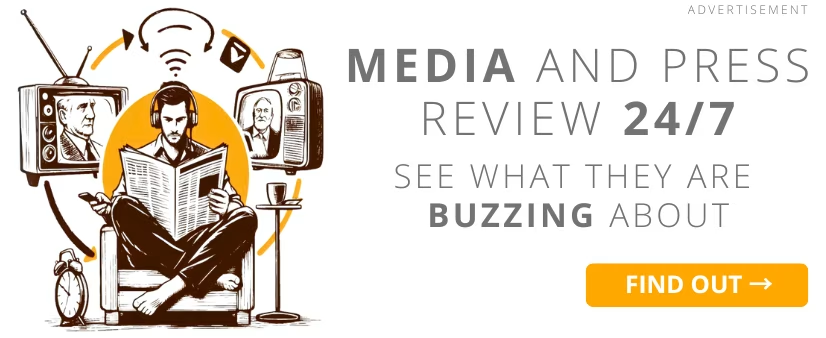It is possible to perceive the domestic media as the huge market with stalls harassing two groups of customers: recipients and advertisers. As regards the press, distributors are intermediaries (Ruch, Kolporter), and in case of electronic media - ground satellite and cable broadcasting stations.
Especially from 1993 a main change was creating commercial radio and TV stations, earning their living exclusively off advertisements, next to existing already public ones. They are arousing the extraordinary interest private station the Polsat and three nationwide radio networks: RMF FM, the Radio Maryja and the Radio Zet.
Astonishingly quickly a TVN popularity grows, which 9 August 2001 also started with the twenty-four-hour news channel TVN 24, as well as the RTL 7 station. It is worthwhile recalling that stations broadcasting scrambled programmes obtained the concession for sending in Poland with satellite road: Canal + and FilmNet. Also a first digital lorry was started Wizja TV.
Into the decade of years 90. Poland entered with media national, subjected to the political control. Starting from the half of 1989 our media market underwent transformations, biggest probably from the time of the World War II. In editorial offices a technological revolution took place (computerization, offset printing), a number of recipients of the satellite television grew rapidly, and the radio passed on the digital technology.
Agreement of "round-table", backed up with an amendment to a bill in June 1989 caused the press legislation avalanche of press new titles, and liquidation of RSW "Prasa-Książka-Ruch", the only publisher of newspapers contributed to open another prospects for the Polish journalism. Also abolishing the central censorship office was a substantial change which to a considerable degree reduced the freedom of the statement.
According to the state at the end of 1995 in Poland about 5 thousand press titles were published, in it: 900 about general plots, over 100 about the youth and child`s subject matter, 800 - scientific and 1500 sublocal. They are estimating, that distributors are distributing no more than 2100 titles, the rest is reaching the recipient with the subscription or direct sales.
According to R. Filas, process of the metamorphosis of Polish media in years 1989 - 1995 we can divide in four phases:
- Of wild enthusiasm of new publishers
- Of the seeming stability and subcutaneous changes in the press and on the radio
- Of open fight for the market of media, especially for audio-visual media
- Of new developing the market.
From the second half of 1989, a flood of magazines covering various topics entered the press market. Among them, homemade erotic magazines did not catch on (later replaced by Polish versions of Western magazines published by companies like Scandinavia-Poland Publishing House). The number of cultural publications, association periodicals, and party press titles noticeably declined. A significant group of periodicals were published by the Citizens` Committees, with the goal of securing votes in the Sejm and Senate elections.
Foreign capital quickly showed interest in publishing in Poland. Early attempts included the launch of "Goniec Pomorski" in Koszalin with German investment and "Dziennik Dolnośląski" in Wrocław with substantial Norwegian support, followed by "Czas Krakowski," funded by French and Italian investors.
Next, major Western publishers joined the competition, aiming for a strong presence in the Polish press market with their own publications tailored to Polish readers. First, two versions of Western publications, "Popcorn" and "Dziewczyna" (Madchen), appeared through Phoenix Intermedia in Wrocław. Another Wrocław publisher, PP-U Makler, released Polish versions of German advisory magazines aimed at women.
The "Burda" monthly also began reaching Polish readers in the local language. Shortly after, the Bauer publishing house entered the market, launching "Bravo" as its first publication in Poland. Within two years, J. Marquard Ost Gruppe, already present on the Polish market, took over "Dziewczyna" and "Popcorn." Other major German publishers, led by Springer and Bertelsmann, joined Bauer and Burda, shaping the thematic focus, information delivery style, and graphic design - a major advantage of Western publishers. Their market position is evident: of the top 25 most popular weeklies in Poland, only ten titles belong to Polish publishers; the rest are primarily German, with two titles published by Swiss and American companies (data from 1998, according to Polish Readership Studies).
Among Polish publishers, Prószyński i S-ka deserves attention for magazines like "Poradnik Domowy" and "Cztery Kąty." Long-standing Polish titles such as "Pani," "Działkowiec," and "Detektyw" remain strong. Nonetheless, the highest print runs are achieved by Polish editions of foreign magazines: "Cats," "Elle," "Playboy," "Business Week Polska," "National Geographic," "Lady Fitness," "Cosmopolitan," "Przegląd - Reader’s Digest," and "Newsweek Polska," the newest Polish version of an international magazine, with its first issue published on September 10, 2001. Readers are also drawn to "partworks" (collectible magazines), primarily published by De Agostini and Marshall Cavendish, featuring titles like "Dinosaurs," "World of Knowledge," "World Life," "Easy PC," and "The Human Body."
***
Report prepared for journalism studies at the State Higher Vocational School in Wałbrzych
based on: Zbigniew Bajka "Journalism and the World of Media"
COMMERCIAL BREAK
New articles in section Media industry
Advertising market 2025. Poland, Europe and the World
Marcin Grządka
The global advertising market is growing by 8.8% in 2025 and will reach a value of 1.14 trillion dollars. The industry result in Europe records slightly lower dynamics, at the level of 5.8%. In this comparison, Poland performs clearly above the average. We will record an increase of 8.9% this year and a value of 18.56 billion PLN - estimates WPP Media in the annual report "This Year Next Year".
The print media market 2025. Three global trends
Krzysztof Fiedorek
The market value is 359.53 billion dollars, yet the erosion is visible to the naked eye. The decline for newspapers will amount to -2.3 percent. Despite this, print retains strength: it generates 76 percent of subscription revenues and enjoys 82 percent consumer trust. The future of the industry is defined by hybrid strategies and niche specialization.
Journalism in the age of AI. Why people prefer humans over machines
Krzysztof Fiedorek
Only 12% of people accept news created solely by AI, while 62% prefer those written by humans. At the same time, only 19% notice labels indicating the use of artificial intelligence, while younger audiences ask AI to explain the content to them. These are the findings of the Reuters Institute report on artificial intelligence in media.
See articles on a similar topic:
Influencers and social video rule information. Digital News Report 2025
Krzysztof Fiedorek
Seconds of vertical clips set the future of news. TikTok, YouTube and an army of influencers pull viewers away from TV sets and newspaper pages. Whoever masters this new pulse seizes not only attention but also control of the story.
The Podcast Market in Poland. Research by Wprost and Tandem Media
Krzysztof Fiedorek
How many Polish internet users listen to podcasts? Where and how do we listen? How and why do we choose episodes? Two major studies on this topic were recently released. One by Wprost, the other by Tandem Media from Agora Radio Group. We present both for data comparison and insights.
Business Communication and 25 Years of PR Evolution. ITBC Report
KFi
How has technology transformed the way companies communicate with clients? What connects speed of response, creativity, and crisis resilience? The ITBC Communication report reveals how communication has evolved over the past 25 years and what defines the future of business relationships.
Why do we believe fakes? Science reveals the psychology of virals
KFi
Why do emotions grab more attention than evidence, and why can a fake authority overshadow scientific data? Researchers from Warsaw University of Technology, Jagiellonian University, and SWPS University in Poland sought the answers. Here are their findings.





























